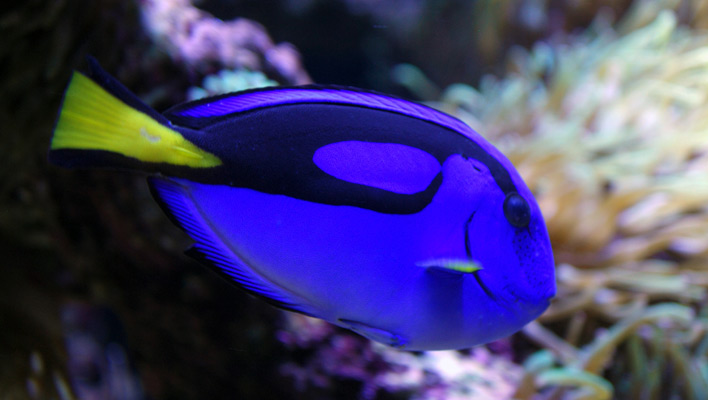Hobby newcomers often wonder why fish are so frequently identified by two-part scientific names in aquarium literature and online resources like Saltwater Smarts. After all, when you’re shopping at your average local fish store, the various critters in the sales tanks are apt to be identified on signs and labels by their common names, which, let’s face it, are usually much easier to pronounce and remember. Are those aquarium authors and bloggers just showing off?
On the contrary, researching the fish (or invertebrates) that pique our interest based on their scientific, rather than common, names is critical to success in the marine-aquarium hobby. Here’s why:
Only one scientific name is valid
Though scientific names—which tell us the animal’s genus (the first part of the name) and species (the second part)—can be changed, only one is considered valid for any given species at any given time. Enter that name into a reputable database like FishBase.org or the Integrated Taxonomic Information System, and you will get accurate information for the exact species in question.
The same cannot be said for common names. No standard governs their use, and anyone can apply them. That’s why you’ll see multiple common names given to one species or one common name applied to multiple species. As a result, you might get your signals crossed and end up with a species that you think is easy to care for but is actually quite challenging.
Take the name “blue tang” for example. This moniker is among the various common names given to at least three different surgeonfish species—Acanthurus coeruleus, Acanthurus leucosternon, and Paracanthurus hepatus. One of these blue tangs, A. coeruleus, is quite hardy and adaptable, even beginner-friendly, while the other two are much more challenging to maintain in aquariums and better suited to experienced or even expert hobbyists.
Scientific names are universal
There are no regional variations in scientific names. The exact same name applies wherever you go in the world or whether you speak English, Spanish, French, German, Nepali, Kinyarwanda, Urdu, or any other language.
You can’t judge a fish by its appearance
Sometimes two or more unique species evolve to be very similar in appearance but are very different in their feeding requirements, behavior, aggression levels, etc.
Among the butterflyfishes, for example, many different species are more or less yellow overall with a black vertical band running through the eye. Some of these butterflies, such as Chaetodon kleinii, tend to adapt quite well to aquarium conditions and fare, while certain others, such as Chaetodon speculum (whose diet consists primarily of coral polyps), almost always refuse to eat anything offered and fail to thrive in aquariums. Verifying a specimen’s scientific name will help sort this out.
Scientific names lead to informed decisions
The bottom line is this: common names equal chaos. On the other hand, using scientific names in conjunction with authoritative reference materials leads to informed stocking decisions, which means fewer compatibility issues and heartbreaking losses.



